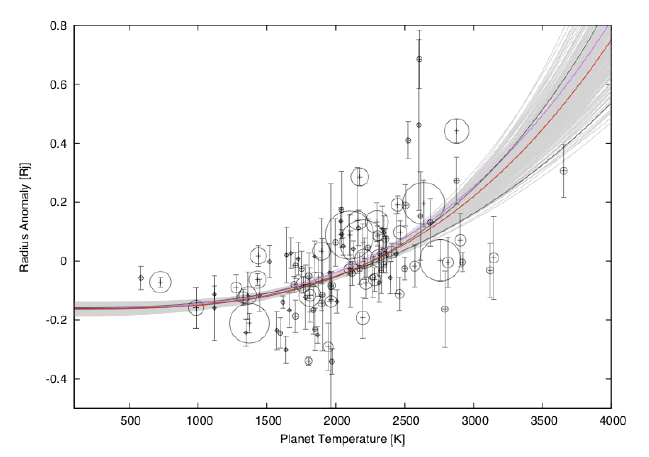The announcement of new transiting hot-Jupiter type planets, such as WASP 79b or HAT-P-38b, by the ground-based surveys no longer generates press releases, but the march of discovery does give us an ever-clearer view of the planetary census.
Yesterday, Matteo Crismani turned in his UCSC Senior Thesis. In addition to the results that we published in our 2011 paper (described in this post and this post) he also took an updated look at the relationship between the radius anomaly (the fractional discrepancy between the theoretically predicted radius and the actual observed radius) and the insolation-derived effective temperature of the planet. With the large aggregate of hot Jupiter-class planets that now have good measurements for both planetary mass and planetary radius, the dependence of the radius anomaly on the planetary temperature has grown clearer.
The best fit power-law now has the radius anomaly scaling as T^2.9, with an uncertainty on the exponent of ~0.3. This is quite close to the T^2.6 relation that stems from the back-of-the-envelope arguments that invoke the Batygin-Stevenson Ohmic heating mechanism. In effect, these hot Jupiters are like Ball Park Franks…








